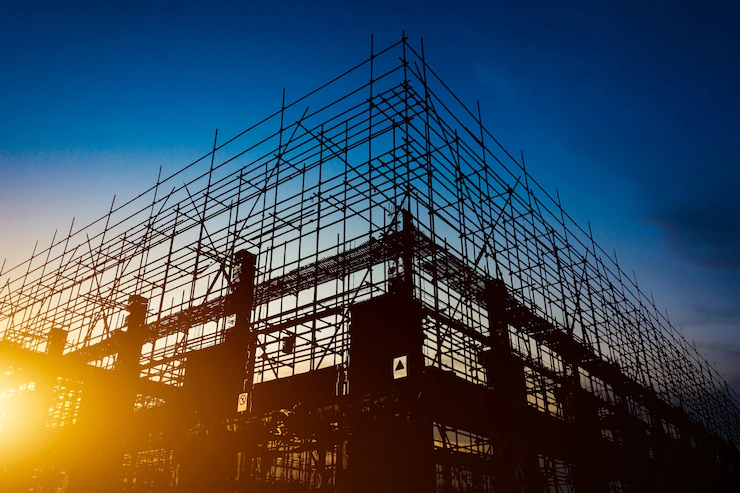The process of transporting construction materials to worksites can be challenging, especially if you have no plan in place. A plan will help you know the preferred transportation method for a given material.
There's no one-size-fits-all method in the delivery of construction materials; different materials require different handling. Therefore, how will you know what method suits what? This article will tell you how. So, read on!
Concreting Materials
Concreting materials refer to concrete ingredients, except cement. These materials include sand, aggregate, and quarry dust. Concreting materials are small-sized and come as particles of different dimensions.
No matter the particle size, the best transportation for these materials is the use of equipment that’s enclosed, such as a lorry. You can also opt for a tip truck that’ll ease the off-loading process and save time. Instead of workers scooping out the content, the back of the truck will fold over, pouring out its contents.
An enclosed transportation method will prevent the falling off of the materials during transportation. Also, if the top of the vehicle is going to be open, you need to place a heavy fabric mesh on the surface of your materials.
As stated earlier, concreting materials are small-sized, meaning they can easily be blown away by the wind. The fabric will prevent this, eliminating waste and reducing any environmental pollution.
Stones
Stones, in this context, refer to machine-cut stones, quarry stones, and bricks. These are the most common construction materials on site.
The transportation of stone isn’t complex and only requires basic transportation methods. You can use lorries, vans, and trucks, but ensure the sides are well-covered. Using a transportation method whose sides are enclosed will prevent the stones from falling off and injuring other parties during transit.
Also, consider arranging them on top of each other, a few blocks high. The arrangement will prevent the materials from breaking during transport, as they move from place to place, maybe due to terrain.
The breaking will interfere with the quality of goods, and the recipient might reject the stones. Neatly arranging the stones will also prevent accidents during off-loading.
Pre-Fabricated Goods

In modern construction, builders are adopting modular construction in their projects. All the fabrication and construction are done off-site, and the assembly is done on-site. You’ll see this kind of construction with steel or wooden components.
When transporting prefabricated goods to a site, they need to be as is, without alteration. This means you need a transport system that’ll accommodate the unit as a whole. An open trailer will help you do the job; however, ensure the unit is properly strapped to prevent tipping over.
Alternatively, use a crane trailer, which has a crane attached to its body. The crane will hold the modular unit in place, and should there be a tip over, it’ll hold the unit up to prevent damage.
Ready-Mix Concrete
Ready-mix concrete is concrete that’s been prepared off-site. This means once it arrives on site, you only need to cast it.
With transporting ‘wet’ concrete, you need specialized transporting equipment. Here, you need to ensure that the mixture doesn’t set during transit.
There are lorries with rotating bins that you can utilize for this purpose; the rotating bins will ensure the concrete doesn’t standstill.
As a contractor, you don’t need to worry about buying this equipment; most ready-mix concrete suppliers will deliver the concrete with their equipment.
1. Cement
Cement is the material that binds the concreting materials together to form concrete. This material needs special handling, failure to do so might affect its quality, and end up compromising the structural integrity of the building where you’ll use it.
When transporting cement, you need to ensure the surrounding conditions are moisture-free. You can only ensure this by using an all-enclosed lorry or van during transport.
Also, refrain from placing the bags on the bare vehicle surface; lay down a sheet or place pallets. The layer will prevent the cement from absorbing any dampness from the vehicle, especially when the site is far away.
During packaging, be sure to place the cement bags on top of each other to eliminate air circulation that can become a source of moisture. Also, don’t stack too many bags on top of each other to prevent the cement from lumping. Nine or ten bags a stack should suffice.
2. Steel

Steel is used to reinforce buildings to ensure they’re strong enough to hold weight. Steel is manufactured in long lengths of approximately 12m. This means that you need to use a transportation method that accommodates this length.
There are long trucks you can use to meet the length. However, if you’re covering a short distance, you can use a standard lorry or van with an open deck. Here, the steel pieces will hang beyond the length of the vehicle. It’s good to note that this can be dangerous, especially to other road users.
If you have no other option, ensure you alert the person behind you of the extended length, and they should maintain a considerable distance from you to avoid accidents.
Conclusion
This article has shown you the various ways to transport commonly used construction materials to your site. Therefore, make sure to factor in the tips during your transportation for an easy and efficient process.
As you decide on the transportation means to use, you need to consider the weight of your materials and the vehicle's carrying capacity. With this, please refrain from overloading; if your preferred method can’t carry the weight of goods you’re transporting, choose the next best option available.
Read Also:




